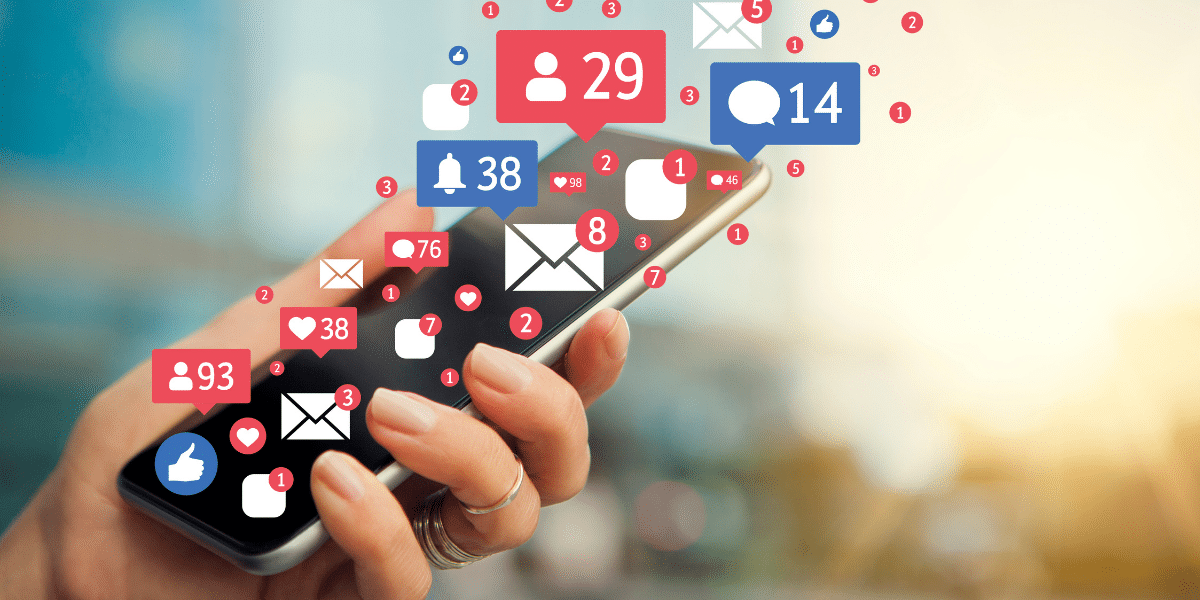How to Beat Distractions

Distraction is a thing that prevents someone from concentrating on something else.
According to Google
I like to think of distraction as a passive concept. It’s not something you actively do (like procrastination) but is actually something that happens almost by accident.
We all know that distraction is bad and focussed work is good, but did you know that the number one cause of distraction in our modern world is our digital devices?
Shocking I know – these very things that were invented to make our lives easier and more efficient are actually our greatest cause of distraction and discontent.
For a lot of people, tech is about being busy, being connected, constantly doing and constantly thinking and that’s what our devices were designed to do. Which was awesome to start with, but then some genius invented the idea of notifications, and here’s the thing…
Nothing in nature goes – ding!
Cows moo…
Insects chirp…
Waves roar…
But only human-made things go ding!
The sole purpose of alerts and notifications is to draw your attention away from what you are currently doing and make you pay attention to something else.
App developers have trained us like Pavlov’s dogs to respond to alerts and notifications. Each time one of those things goes off we get a little hit of dopamine – which is a feel good hormone – and so are motivated if not compelled to check our device to see what’s happened and what we might be missing out on.
Studies show that when we are focusing on a task and are interrupted, it takes our brains an average of 23 minutes to return to the same level of focus we had before the interruption.
I know right – 23 minutes!
So to do the math for a moment, if you’re receiving 20 alerts each day, you’re essentially looking at around 7.5 hours of distracted, unfocused work time per day. For some that’s a full day’s work!
So, here are my top tips for you to avoid distraction when you are trying to get things done:
If you mainly work on a laptop or desktop computer:
- Put your phone on silent and put it face-down away from your immediate work area. Not only will this help you with the distraction, but the last thing you want is that little device sitting there in your field of vision just inviting you to use it as a tool of procrastination.
- Turn off all your alerts and notifications on your computer. You do not need dings, pings and bleeps each time you receive an email, someone sends you a slack message or comments on your Facebook post.
- If you need to access social media as part of your work (eg. answering messages or engaging with your Facebook group) then I recommend using these two free Google Chrome extensions.
The first one is called Mindful Browsing. The extension is activated when you access certain sites that you have specified. I’ve set it to appear for all social media websites and it covers your screen with a beautiful image and the question “Do you want to spend time on (for example) Instagram” and you get the choice of clicking “Yes, 10 minutes” or “Actually, nah”. If you select Yes, then after ten minutes the screen cover appears again and you need to make the decision to continue or finish up.
This is great in that if you’ve somehow ended up in the mindless scroll, it brings you back to reality and gives you the opportunity to make a better decision.
The second extension I use is called Newsfeed Eradicator. What this extension does is replaces the newsfeed in your social media platform with a quote. This allows you to get into the platform, answer questions, respond to comments and do whatever you need to do and get out again without getting distracted by your newsfeed items and ending up in the mindless scroll. It currently works with Facebook, Instagram, LinkedIn, Twitter and Youtube.
I have used both of these extensions everyday for the past few years and can’t recommend them highly enough.
And finally for all those who do a lot of work on their phone – I really only have one piece of advice:
Turn off your notifications!
Ok, if that was a bit harsh, here’s something else for you to consider.
Work out which apps are your most important – in that they give you the most important information throughout your day. For me that’s phone calls and text messages. So what I do is allow banner notifications for phone calls and text messages only. Banner notifications are those ones that show up on your screen when your phone is locked.
For everything else I only use badge notifications – which are those little red numbers that appear on the app that you can only see once your phone is unlocked. So for me that includes Messenger, Snapchat and a reminder app I use for my daily vitamins and medications.
That’s it. I don’t have any other social media apps on my phone and I don’t allow notifications of any kind for anything else – especially not my email!
The reason I do this is because I want to be intentional with my time and choose for myself when I am going to do things like check my email.
I’m happy to be reactive to things like phone calls and text messages when I look at my phone because that’s usually how my family and my kids’ schools communicate with me which are important things in my life.
However, that said, my phone is on silent 80% of the day so a quick glance at my screen in between tasks lets me know if there is something important I need to respond to – or if it’s OK for me to just jump straight into focusing on the next task.


